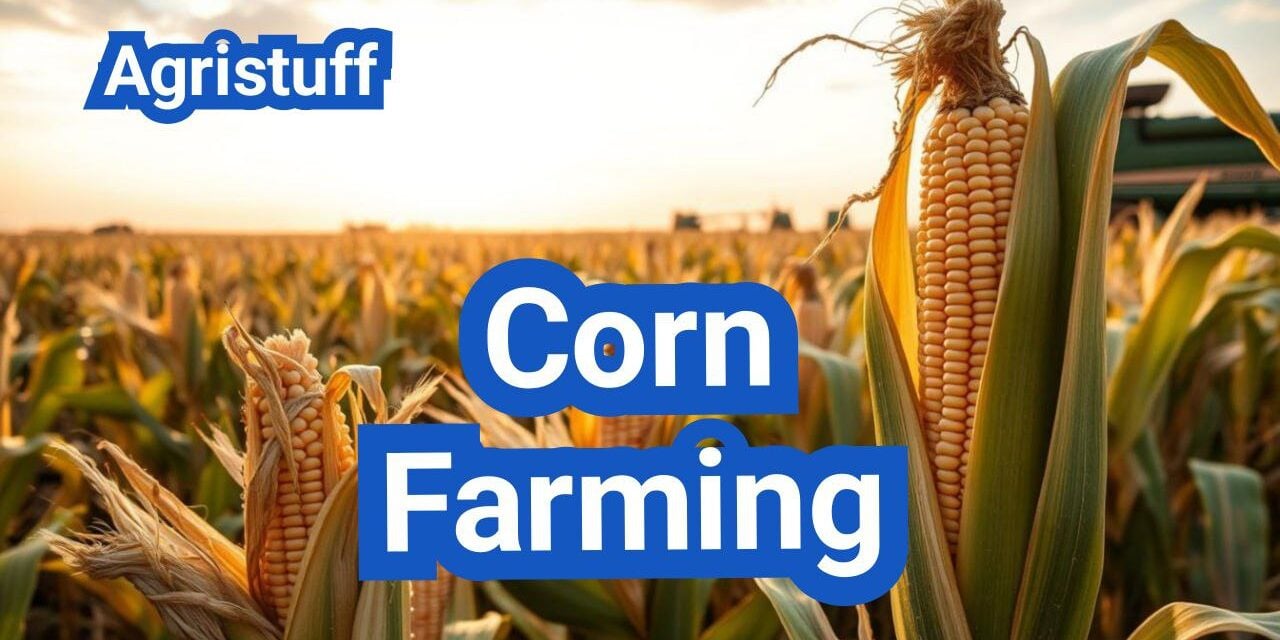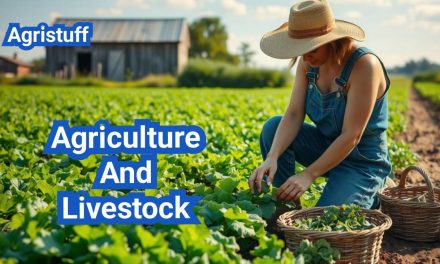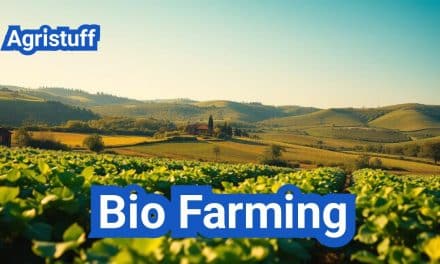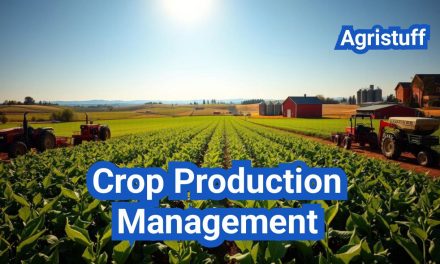As spring approaches, farmers and agronomists eagerly anticipate the start of corn farming in the United States. The timing of planting is crucial for optimal crop yields and profit per acre.
The question that arises annually is: when is the best time to begin planting? The answer depends on various factors, including weather conditions and soil temperature, which significantly impact corn production.
Understanding the optimal planting windows and harvest timing is vital for successful maize farming in the U.S.
Key Takeaways
- Optimal planting time varies by region and weather conditions.
- Soil temperature is a critical factor in determining planting time.
- Corn farming profit per acre depends on yield and market prices.
- Understanding planting windows and harvest timing is crucial.
- Weather conditions significantly impact corn production.
The Economic Landscape of Corn Farming in the U.S.
The economic landscape of corn farming in the U.S. is multifaceted, involving various factors that contribute to its overall economic impact. To understand this landscape, it’s essential to examine the current market overview, profit potential per acre, and the broader economic impact on U.S. agriculture.
Current Market Overview
The current market for corn in the U.S. is influenced by factors such as global demand, weather conditions, and government policies. Fluctuations in global corn prices can significantly affect the profitability of corn farming. As of recent years, the U.S. has maintained its position as a leading corn producer, with a significant portion of its crop being exported. The domestic market also plays a crucial role, with corn being used for ethanol production, animal feed, and other industrial applications.
Profit Potential Per Acre
The profit potential per acre for corn farming varies widely depending on factors such as soil quality, irrigation, and farming practices. High-yielding corn varieties and advanced farming techniques have increased the average yield per acre, contributing to higher profitability. However, costs such as seed, fertilizers, and equipment also play a significant role in determining the net profit per acre. Farmers who adopt precision agriculture techniques can optimize their inputs and maximize their returns.
Economic Impact on U.S. Agriculture
Corn farming has a substantial economic impact on U.S. agriculture, contributing to the country’s GDP and providing employment opportunities. The corn industry supports a wide range of sectors, from farm equipment manufacturing to ethanol production. Moreover, the economic activity generated by corn farming has a ripple effect on local economies, particularly in rural areas where corn is a primary crop.
Understanding Corn Varieties and Hybrid Selection
Selecting the right corn hybrid is crucial for maximizing yield and profitability in corn farming. The diverse range of corn varieties, including field corn, sweet corn, and specialty corn, each serve different purposes and offer unique benefits.
Field Corn vs. Sweet Corn vs. Specialty Corn
Corn is categorized into several types based on its usage and characteristics. Field corn, the most widely grown type, is used for livestock feed, ethanol production, and other industrial applications. Sweet corn is harvested when the kernels are immature and is consumed directly by humans. Specialty corn includes types like popcorn and ornamental corn, which have specific traits that differentiate them from field and sweet corn.
- Field corn: Predominantly used for livestock feed and ethanol production.
- Sweet corn: Consumed fresh or frozen, it’s a popular vegetable.
- Specialty corn: Includes popcorn, high-amylose corn, and other unique types.
Hybrid Maturity and Growing Degree Days (GDD)
The maturity of a corn hybrid and its Growing Degree Days (GDD) requirement are critical factors in determining its suitability for a particular region. GDD is a measure of the daily temperature that contributes to the growth of corn. Different hybrids have different GDD requirements to reach maturity.
Understanding GDD is essential for selecting a hybrid that will mature before the first frost in your area. Farmers should choose hybrids with a GDD rating that matches their region’s growing season.
“The key to successful corn production lies in matching the hybrid to the environment.” –
Corn Industry Expert
Selecting the Right Hybrid for Your Region
To select the right hybrid, farmers must consider several factors, including soil type, climate, and pest resistance. Local agricultural extension services and seed company representatives can provide valuable insights into the best hybrids for specific conditions.
When evaluating hybrids, consider traits such as drought tolerance, disease resistance, and yield potential. Testing multiple hybrids on your farm can help identify the most suitable varieties.
By carefully selecting the appropriate corn variety and hybrid, farmers can optimize their yield and contribute to the overall efficiency of their farming operation.
Site Selection and Soil Preparation
The foundation of a productive corn crop lies in careful site selection and thorough soil preparation. Corn farming’s success is heavily influenced by the choice of land and how well the soil is prepared for planting.
Ideal Soil Conditions for Corn
Corn requires well-drained, fertile soils with adequate moisture retention. Soil texture and structure play a crucial role in determining the soil’s water-holding capacity and aeration, both of which are vital for healthy corn growth.
Soil Testing and Amendment
Before planting, soil testing is essential to determine the nutrient content and pH level of the soil. Based on the test results, appropriate amendments can be applied to adjust the soil’s fertility and pH to optimal levels for corn production.
| Soil Characteristic | Ideal Condition for Corn |
|---|---|
| pH Level | 6.0 – 7.0 |
| Nitrogen Level | Adequate for the crop’s demand |
| Soil Texture | Well-drained, loamy soils |
Field Preparation Techniques
Effective field preparation involves tillage to loosen the soil, remove weeds, and prepare a smooth seedbed. Conservation tillage methods can help reduce soil erosion and improve soil health over time.
By focusing on site selection and soil preparation, farmers can significantly enhance the productivity and profitability of their corn farming operations.
Optimal Planting Windows Across U.S. Regions
Optimal corn planting windows differ across U.S. regions, reflecting the diverse climatic and soil conditions found across the country. Understanding these regional differences is crucial for maximizing corn yields and ensuring successful crop management.
Corn Belt Planting Dates
The Corn Belt, which includes states like Iowa, Illinois, and Indiana, typically experiences optimal planting dates between late April and early May. Soil temperature and moisture levels are critical factors during this period, as they directly impact seed germination and emergence.
Southern States Planting Calendar
In the Southern states, such as Texas and Georgia, corn planting can begin as early as late February or early March. Warmer winters and earlier springs in these regions allow for an earlier start to the planting season, but farmers must be cautious of potential late-season frosts.
Northern States Considerations
Northern states, including Minnesota and Wisconsin, typically have later planting dates, often starting in late May or early June. Cold soil temperatures and the risk of frost are significant concerns in these areas, necessitating careful planning and potentially the use of cold-tolerant hybrids.
Soil Temperature Requirements for Emergence
Soil temperature plays a vital role in corn emergence. Optimal soil temperatures for corn germination range between 55°F and 65°F (13°C to 18°C). Planting when soil temperatures are too low can lead to poor emergence and reduced yields. Farmers are advised to monitor soil temperatures closely to determine the optimal planting time.
By understanding the optimal planting windows and soil temperature requirements for their specific region, corn farmers across the U.S. can make informed decisions to enhance their crop’s potential for success.
Seeding Rate and Population Management

Optimizing seeding rates is crucial for maximizing corn yields. Effective seeding rate and population management enable farmers to achieve the desired plant population, reduce competition for resources, and ultimately enhance crop productivity.
Calculating Optimal Seeding Rates
To determine the optimal seeding rate, farmers must consider factors such as soil type, moisture levels, and the germination rate of the seed. A corn seeding rate calculator can be a valuable tool in this process, helping to estimate the ideal number of seeds to plant per acre based on these variables.
Population Adjustments Based on Soil Productivity
Soil productivity plays a significant role in determining the optimal corn population. In highly productive soils, higher populations can be supported, while in less productive soils, lower populations may be more appropriate. Adjusting the seeding rate according to soil productivity helps in achieving a uniform stand and maximizing yield potential.
Stand Assessment Techniques
One effective method for assessing corn stand is the 1/1000 acre method. This involves counting the number of plants within a measured area equivalent to 1/1000th of an acre. By using this technique, farmers can accurately determine their plant population and make informed decisions about potential replanting or adjustments for future crops.
By carefully managing seeding rates and population densities, corn farmers can improve crop uniformity, reduce waste, and increase overall yields. Utilizing tools like a corn stand assessment 1/1000 acre method ensures that farmers have the data needed to make precise adjustments.
Planting Techniques and Equipment
The success of corn production is significantly influenced by planting methods and machinery. Efficient planting techniques not only enhance yield but also reduce operational costs. As such, understanding the optimal planting techniques and equipment is crucial for farmers.
Row Spacing Considerations
The standard row spacing for corn in many parts of the U.S. is 30 inches. This spacing has been adopted due to its balance between allowing adequate space for plant growth and maximizing land use. Research has shown that this spacing can lead to higher yields in many soil types. However, the optimal row spacing can vary based on factors like soil productivity and the specific corn hybrid being planted.
Planting Depth Recommendations
Planting depth is another critical factor in corn production. A depth of 1.5 to 2 inches is generally recommended, as it allows for good soil contact and adequate moisture uptake. Uniform planting depth is essential for achieving even emergence and stand establishment.
Modern Corn Planting Machinery
The development of modern planting machinery has significantly improved the efficiency and precision of corn planting. Precision planters equipped with GPS and other technologies enable farmers to plant at optimal rates and depths, even in challenging conditions. The use of such machinery can lead to improved yields and reduced input costs.
As noted by agricultural experts, “The right planting equipment can make a significant difference in corn yields and overall farm profitability.” This underscores the importance of investing in quality planting machinery.
Corn Farming Process Timeline

The corn farming process timeline is a critical aspect of agricultural planning and management. It encompasses various stages from planting to harvest, each with its own set of challenges and opportunities.
Duration from Planting to Harvest
The duration from planting to harvest is a crucial factor in corn farming. This period can vary significantly based on factors such as corn variety, climate, and geographical location. Generally, corn is planted in the spring when soil temperatures reach around 55°F to 60°F, and it takes approximately 90 to 120 days to mature.
Factors Influencing Duration:
- Corn hybrid maturity days
- Weather conditions, including temperature and rainfall
- Soil quality and preparation
Key Growth Stages
Corn growth can be divided into several key stages, each critical for optimal yield.
| Growth Stage | Description | Days After Planting |
|---|---|---|
| Germination | Corn seed begins to sprout | 7-10 |
| V6 Stage | Six leaves are visible | 20-25 |
| Tasseling | Corn plants produce tassels | 50-60 |
| Silking | Ears produce silks | 55-65 |
| Grain Fill | Kernels fill with starch and nutrients | 65-120 |
Critical Management Points
Effective management during critical growth stages is essential for maximizing yield.
- Nitrogen Application: Typically done during the V6 stage to promote healthy growth.
- Pest and Disease Management: Regular monitoring and control measures are crucial, especially during tasseling and silking.
- Irrigation Management: Adequate moisture, particularly during grain fill, is vital for optimal kernel development.
By understanding and managing these critical aspects of the corn farming process timeline, farmers can significantly improve their crop yields and overall productivity.
Nutrient Management for Maximum Yield

To maximize yield, corn farmers must implement a comprehensive nutrient management strategy. This involves understanding the nutrient requirements of corn at different growth stages and ensuring that the soil can provide these nutrients.
Nitrogen Requirements and Timing
Nitrogen is a critical nutrient for corn production, influencing both yield and quality. The optimal timing for nitrogen application depends on factors like soil type, climate, and the specific corn hybrid being grown. Generally, nitrogen is applied at planting and again during the growing season, typically during the V6-V8 growth stages.
Nitrogen Application Timing: Pre-plant, at-planting, and sidedress applications are common practices. Sidedress application during the growing season can help match nitrogen availability with peak crop demand.
Phosphorus and Potassium Needs
In addition to nitrogen, phosphorus and potassium are essential for corn growth. Phosphorus supports root development and early plant growth, while potassium helps with overall plant health and stress tolerance.
| Nutrient | Role in Corn Production | Typical Application Rate |
|---|---|---|
| Phosphorus | Root development, early growth | 50-100 lbs/acre |
| Potassium | Overall plant health, stress tolerance | 100-200 lbs/acre |
Micronutrient Considerations
While nitrogen, phosphorus, and potassium are the primary macronutrients, micronutrients like zinc, boron, and magnesium also play crucial roles in corn production. Deficiencies in these micronutrients can lead to reduced yields and poor plant health.
“Micronutrients are essential for corn production, and their deficiency can significantly impact yield. Soil testing is critical to identify potential micronutrient deficiencies.”
Soil Sampling and Testing Protocols
Effective nutrient management begins with soil sampling and testing. By understanding the nutrient content and pH of the soil, farmers can make informed decisions about fertilizer applications.
Soil sampling should be done regularly, following a grid pattern to ensure representative samples. The depth of sampling is also important, as nutrient distribution can vary with soil depth.
Irrigation and Water Management

The success of corn farming in various U.S. regions is significantly influenced by irrigation and water management practices. Effective irrigation ensures that corn crops receive the right amount of water at the appropriate time, which is crucial for optimal growth and yield.
Determining Corn Water Requirements
Corn water requirements vary based on factors such as growth stage, soil type, and weather conditions. Generally, corn requires about 20-25 inches of water per season. Soil moisture monitoring and evapotranspiration (ET) rates are key tools in determining the exact water needs of the crop.
Irrigation Systems and Scheduling
The choice of irrigation system can significantly impact water efficiency. Common systems include center pivot, drip irrigation, and sprinkler irrigation. Irrigation scheduling should be based on soil moisture levels, weather forecasts, and crop growth stages to optimize water use.
Drought Mitigation Strategies
In areas prone to drought, strategies such as conservation tillage, mulching, and the use of drought-tolerant hybrids can help mitigate the impact of water scarcity on corn yields. These practices, combined with efficient irrigation management, can enhance the resilience of corn crops to drought conditions.
By understanding and implementing effective irrigation and water management practices, corn farmers can improve crop resilience, optimize water use, and ultimately enhance their yields.
Weed, Pest, and Disease Management

Weeds, pests, and diseases pose significant threats to corn crops, necessitating robust management strategies. Effective management of these factors is crucial for maximizing yields and ensuring the long-term sustainability of corn farming operations.
Common Corn Pests and Control Methods
Corn farmers encounter various pests that can cause substantial damage to their crops. Some of the most common pests include the corn rootworm, aphids, and cutworms. Integrated pest management (IPM) strategies are essential for controlling these pests while minimizing environmental impact.
For instance, crop rotation and the use of resistant hybrids can significantly reduce pest pressure. Additionally, targeted pesticide applications can help control pest populations. The table below summarizes common corn pests and their control methods.
| Pest | Damage | Control Method |
|---|---|---|
| Corn Rootworm | Root damage, lodging | Crop rotation, resistant hybrids |
| Aphids | Saps plant sap, transmits viruses | Insecticidal soap, neem oil |
| Cutworms | Cuts seedlings at soil level | Collars around seedlings, Bt products |
Disease Identification and Management
Corn diseases can significantly impact yield and grain quality. Common diseases include gray leaf spot, rust, and northern corn leaf blight. Accurate disease identification is critical for implementing effective management strategies.
Cultural practices such as crop rotation and residue management can help reduce disease pressure. Fungicides are also a crucial tool in managing diseases, particularly when weather conditions favor disease development. The quote from a leading agricultural expert highlights the importance of disease management:
“Disease management is not just about yield; it’s about grain quality and reducing the risk of mycotoxins.”
Integrated Pest Management Approaches
Integrated Pest Management (IPM) involves a holistic approach to managing pests and diseases, combining cultural, biological, and chemical controls. IPM strategies are tailored to the specific needs of the farm and can include techniques such as scouting, crop rotation, and biological control.
By adopting IPM, farmers can reduce their reliance on chemical pesticides and maintain a healthier ecosystem. This approach not only benefits the environment but can also improve the bottom line for farmers by reducing input costs and potentially increasing yields.
Herbicide Programs and Application Timing
Effective weed management is critical for corn production. Herbicides are a key tool in weed control, with various products available for pre-emergence and post-emergence applications. The timing of herbicide applications is crucial for maximizing efficacy and minimizing crop injury.
Pre-emergence herbicides are applied before the crop emerges and can provide early-season weed control. Post-emergence herbicides are applied after the crop has emerged and can be used to control weeds that have germinated. The choice of herbicide and application timing should be based on the specific weed spectrum and crop stage.
Organic Corn Farming Practices

As consumers increasingly prefer organic products, corn farmers are adapting their methods to meet this growing demand. Organic corn farming practices are centered around sustainability and environmental stewardship, offering a viable alternative to conventional farming methods.
Certification Requirements
To be labeled as organic, corn farms must adhere to strict certification requirements. This involves transitioning from conventional farming practices to organic methods over a period of three years. Farmers must maintain detailed records of their farming practices, including soil testing, crop rotation, and pest management strategies. The certification process is handled by USDA-accredited certifying agents, who inspect farms to ensure compliance with organic standards.
Organic Weed and Pest Management
Effective weed and pest management are crucial in organic corn farming. Farmers use various techniques, including crop rotation, mechanical weeding, and biological pest control. For instance, planting cover crops can help suppress weeds, while introducing beneficial insects can control pest populations. These methods not only reduce the reliance on chemical pesticides and herbicides but also promote biodiversity and soil health.
Marketing Organic Corn
Marketing organic corn requires a strategic approach, focusing on the unique selling points of organic produce. Farmers can capitalize on the growing consumer demand for organic products by highlighting the environmental and health benefits of their crops. Building relationships with local buyers, such as organic food processors and retailers, can also provide a stable market for organic corn. Additionally, participating in farmers’ markets and promoting products through social media can help increase visibility and demand.
Industrial Corn Farming Operations

The backbone of modern corn production lies in industrial farming operations, which leverage advanced technology and economies of scale. These large-scale operations are crucial for meeting the global demand for corn.
Scale Economies in Large Operations
Industrial corn farming benefits significantly from scale economies. Larger operations can negotiate better prices for inputs such as seeds, fertilizers, and equipment. They also benefit from more efficient use of machinery and labor, reducing costs per acre.
According to a study by the USDA, larger farms tend to have lower costs per unit of production. This is due to their ability to spread fixed costs over a larger output, making them more competitive in the global market.
Key benefits of scale economies include:
- Reduced input costs through bulk purchasing
- Increased efficiency in machinery and labor use
- Better market competitiveness due to lower production costs
Equipment and Technology Investments
Industrial corn farming operations invest heavily in equipment and technology to improve efficiency and productivity. Modern planters, combines, and drones are examples of the technology used to optimize corn production.
“The use of precision agriculture technologies has revolutionized corn farming, allowing for more precise application of inputs and better crop monitoring.” – John Deere spokesperson
A comparison of traditional and modern farming equipment shows significant improvements in efficiency and productivity:
| Equipment Type | Traditional | Modern |
|---|---|---|
| Planting Efficiency | Lower | Higher |
| Harvesting Speed | Slower | Faster |
| Precision Application | Less Precise | More Precise |
Contract Growing Opportunities
Contract growing is another aspect of industrial corn farming, where farmers agree to produce corn under specific conditions for a buyer. This provides farmers with a stable income and buyers with a consistent supply of high-quality corn.
Contract growing opportunities are on the rise, driven by the demand for consistent quality and supply chain stability. Farmers benefit from predictable revenue, while buyers gain access to high-quality corn.
Determining Optimal Harvest Timing

Achieving optimal harvest timing is essential for corn production, affecting both yield and grain quality. Corn farmers must consider several factors to determine when to harvest their crop.
Moisture Content Guidelines
The moisture content of corn at harvest is a critical factor in determining optimal harvest timing. Generally, corn is ready to harvest when the moisture content is between 20% and 25%. However, the ideal moisture content can vary depending on the intended use of the corn and the drying capabilities available.
Dry Down Rates Per Day
Dry down rates are influenced by weather conditions, particularly temperature and humidity. On average, corn can dry down at a rate of about 0.5% to 1% per day under favorable conditions. Understanding these rates helps farmers predict when their corn will be ready for harvest.
Field Drydown vs. Mechanical Drying
Farmers have two primary options for drying their corn: field drydown and mechanical drying. Field drydown relies on natural weather conditions to dry the corn, while mechanical drying uses equipment to dry the corn more quickly. The choice between these methods depends on factors such as weather forecasts, equipment availability, and cost considerations.
Kernel Black Layer Formation
The formation of the kernel black layer is a physiological indicator of corn maturity. This layer forms at the base of the kernel and signals that the corn has reached physiological maturity. While not the sole determinant of harvest readiness, it is an important indicator that, combined with moisture content, helps farmers decide when to harvest.
By carefully considering these factors, corn farmers can optimize their harvest timing to maximize yields and quality.
Harvesting Equipment and Techniques
Modern corn farming relies heavily on advanced harvesting equipment and techniques. The efficiency and effectiveness of the harvest are crucial for maximizing yield and minimizing losses.
Modern Combine Harvester Technology
Modern combine harvesters have revolutionized corn harvesting with their advanced technology and capabilities. These machines are equipped with features such as automatic header height control, yield monitoring systems, and advanced grain separation mechanisms. For instance, some combines use rotary separation to improve grain separation and reduce losses.
Adjusting Equipment for Optimal Performance
To achieve optimal performance, it’s essential to adjust the harvesting equipment according to the field conditions. This includes setting the correct header height, adjusting the threshing and separating settings, and ensuring proper combine speed. Regular maintenance is also crucial to prevent breakdowns during the harvest.
- Check and adjust header height for optimal cutting
- Monitor and adjust threshing and separating settings
- Maintain proper combine speed for efficient harvesting
Minimizing Field Losses
Minimizing field losses during harvesting is critical for maximizing yield. Techniques to reduce losses include using loss monitoring systems to identify areas where grain is being lost, adjusting equipment settings accordingly, and ensuring that the combine is operated within optimal parameters.
By employing modern combine harvester technology, adjusting equipment for optimal performance, and implementing strategies to minimize field losses, corn farmers can significantly improve their harvesting efficiency and overall yield.
Post-Harvest Handling and Storage
The period following corn harvest is critical, with handling and storage practices directly impacting the final product’s quality. Effective management during this phase is essential to maintain grain quality and reduce potential losses.
Storage Moisture Percentage Requirements
One of the key factors in corn storage is achieving the optimal moisture content. Typically, corn should be stored at a moisture level between 13% and 15% to prevent mold growth and insect infestation. Monitoring grain moisture is crucial, as excessive moisture can lead to spoilage, while very dry conditions can result in breakage and increased handling costs.
Drying Systems and Management
Drying is a critical step in preparing corn for storage. Various drying systems are available, including natural air drying, high-temperature drying, and combination drying methods. The choice of drying system depends on factors such as initial grain moisture, weather conditions, and available equipment. Efficient drying management not only helps in preserving grain quality but also in reducing energy costs.
Long-term Storage Considerations
For long-term storage, it’s essential to ensure that the storage facilities are well-maintained and equipped to keep the grain in good condition. This includes using aeration systems to control temperature and moisture, as well as implementing pest management strategies. Regular inspections are vital to detect any potential issues early, allowing for timely intervention.
By focusing on these aspects of post-harvest handling and storage, corn farmers can significantly improve the quality and marketability of their crops.
The Future of Corn Farming in the U.S.
The future of corn farming in the U.S. is poised to be shaped by technological advancements, sustainability, and market trends. As the demand for corn continues to grow, driven by its use in food, feed, and biofuels, the industry must adapt to meet these needs while minimizing its environmental footprint.
Sustainable practices will play a crucial role in the future of corn farming. By adopting conservation tillage, cover cropping, and precision agriculture, farmers can reduce soil erosion, improve water quality, and decrease the use of chemical inputs. These practices not only benefit the environment but also contribute to the long-term viability of corn farming operations.
Corn farming in the U.S. will also be influenced by advancements in technology, including the use of drones, satellite imaging, and data analytics. These tools enable farmers to make data-driven decisions, optimize crop management, and improve yields. As the industry continues to evolve, it is likely that we will see increased adoption of precision agriculture and other innovative practices.
By embracing sustainable practices and leveraging technological advancements, the U.S. corn farming industry can ensure a prosperous future while meeting the needs of a growing population.
FAQ
What are the ideal soil conditions for corn farming?
Corn grows best in well-drained, fertile soils with a pH between 6.0 and 7.0. Soil testing is essential to determine nutrient levels and pH.
How do I determine the optimal seeding rate for my corn farm?
The optimal seeding rate depends on factors like soil productivity, hybrid selection, and desired population. A general guideline is to plant 30,000 to 36,000 seeds per acre.
What is the importance of hybrid maturity and growing degree days in corn farming?
Hybrid maturity and growing degree days (GDD) are crucial in selecting the right hybrid for a specific region. GDD helps predict the maturity date, ensuring the crop is harvested at the optimal moisture content.
How often should I irrigate my corn crop?
Corn water requirements vary by growth stage. Generally, corn needs about 20-25 inches of water per season. Irrigation scheduling should be based on soil moisture monitoring and weather forecasts.
What are the common pests and diseases that affect corn crops?
Common corn pests include corn borers, rootworms, and aphids. Diseases like rust, leaf blight, and smut can also impact corn yields. Integrated pest management (IPM) strategies can help mitigate these issues.
What is the optimal moisture content for harvesting corn?
The ideal moisture content for harvesting corn is between 20-25%. Harvesting at this moisture level helps minimize grain damage and ensures better storage.
How can I improve the storage life of my harvested corn?
Proper drying and storage are critical. Corn should be dried to a moisture content of 15% or lower for long-term storage. Regular monitoring of stored grain is essential to prevent spoilage.
What are the benefits of organic corn farming practices?
Organic corn farming promotes soil health, biodiversity, and efficient water use. It also provides a premium price for producers and meets the growing demand for organic products.
How do I calculate the profit potential per acre for my corn farm?
To calculate profit potential, consider factors like yield, grain price, production costs, and government subsidies. Accurate record-keeping and market analysis are essential for making informed decisions.
What are the key factors that affect corn yield?
Corn yield is influenced by factors like soil quality, hybrid selection, weather conditions, irrigation, and pest management. Optimizing these factors can help maximize yields and profitability.
Conclusion of: Corn Farming in the U.S.
Corn farming in the U.S.: why timing and population decisions pay
Corn farming underpins U.S. feed, fuel, and food markets, and the three levers that move profit most are planting windows, seeding populations, and harvest timing, because they determine how much sunlight a stand captures, how efficiently it uses water and nutrients, and how much grain you actually save at harvest in corn farming. USDA ERS overview of U.S. corn
Planting windows for corn farming start with soil temperature
The simplest rule in corn farming is to plant when the top 4 inches of soil are steadily at or above 50°F with a warming trend, which reduces imbibitional chilling, improves vigor, and promotes uniform emergence for corn farming. Iowa State: soil temperature guidance
Field fitness matters in corn farming: avoid compaction
Even when calendars say “go,” corn farming should wait for fit seedbeds because sidewall smear and surface compaction restrict early roots, reducing standability and kernel set later in the season for corn farming. University of Minnesota: soil compaction basics
Upper Midwest: corn farming often peaks with mid-April to early-May planting
For much of Iowa and the central Corn Belt, corn farming shows the most consistent results when planting from mid-April through early May if soils are fit, as later planting tends to carry a steeper yield penalty than slightly earlier planting in corn farming. Iowa State: best planting dates
Northern tier: shorter seasons require tight corn farming windows
Farther north, corn farming needs to align with shorter frost-free seasons; for example, North Dakota guidance focuses on the first three weeks of May so full-season hybrids can finish before frost while limiting wet-harvest risk in corn farming. NDSU: planting recommendations
Southern & Midsouth: earlier starts for irrigated corn farming
In the Midsouth, irrigated corn farming can start earlier (March into April) and still hold strong yields into early May, but insurance dates, local frost risk, and heat management should guide the exact window for corn farming. Mississippi State Extension: timing context
Hybrid maturity & GDD: connecting corn farming calendars to heat
Hybrid “relative maturity” maps to growing degree days (GDD) to reach black layer, so corn farming plans should match hybrid GDDs to local heat units to hit physiological maturity before damaging frost in corn farming. Iowa State: corn growth & development
Late planting in corn farming: required GDDs drop, but risks rise
Classic work shows required GDDs to black layer decline with planting delays, helping late stands finish, yet corn farming still risks reduced grain fill, lower test weight, and higher harvest moisture when planted well after the prime window in corn farming. Purdue Agronomy: late-planted maturity
Residue & seedbed prep improve early vigor in corn farming
High residue cools and wets the seed zone, so corn farming benefits from residue management that speeds warming while preserving soil cover, helping uniform emergence and early growth in corn farming. Iowa State: managing corn residue
Planter setup in corn farming: downforce, speed, and singulation
Consistent depth, firm sidewalls, and clean seed-to-soil contact are non-negotiables in corn farming; correct downforce, prudent speed, and precise meter maintenance drive singulation and spacing quality in corn farming. Nebraska Extension: downforce & depth
Planting depth for corn farming: 1.5–2.0 inches (deeper if dry)
For strong nodal roots and standability, corn farming typically targets 1.5–2.0 inches deep; in dry springs, going 2.5–3 inches to chase moisture is better than shallow placement in corn farming. Nebraska Extension: planting considerations
Starter fertilizer & seed treatments in corn farming
Cold soils magnify the value of starter P and Zn, and appropriate seed treatments protect against early insects and pathogens so corn farming reaches uniform stands and canopy faster in corn farming. Penn State Extension: starter fertilizer
Target seeding populations for corn farming (rainfed vs. irrigated)
Modern genetics tolerate higher stands, but the economic optimum still depends on water: irrigated corn farming often lands near ~31–34k seeds/ac, while rainfed ranges wider (~24–30k) based on expected yield in corn farming. Nebraska Extension: seeding-rate economics
Benchmarking populations in corn farming for Corn Belt fields
Across many trials, peak yields frequently occur near ~32–34k final plants/ac under average conditions, but pushing beyond that is hybrid- and environment-specific in corn farming, and lodging risk can erase small gains in corn farming. Iowa State: population considerations
Row spacing: why 30-inch rows still dominate corn farming
While 20–22 inch rows can pay in some environments, equipment cost and mixed yield responses keep most corn farming at 30-inch spacing, balancing light interception and logistics for corn farming. Iowa State: row spacing overview
Emergence speed and uniformity in corn farming
Emergence depends on temperature, moisture, and depth; uneven emergence taxes final yield, so corn farming should track thermal time and check seed placement across the bar to maintain uniform stands in corn farming. Ohio State: emergence fundamentals
Verify stands the simple way in corn farming
Use the 1/1000-acre method: in 30-inch rows, measure 17’5”, count live plants, and multiply by 1,000; repeat across the field to guide replant decisions in corn farming and to evaluate planter performance in corn farming. Iowa State: stand assessment steps
Replant thresholds for corn farming
When gaps are severe, corn farming may benefit from partial or full replant, but decisions must weigh remaining population, calendar date, uniformity, and expected returns before changing course in corn farming. Purdue Agronomy: corn replant considerations
Physiological maturity marks the harvest countdown in corn farming
Black layer (R6) forms roughly 55–65 days after silking; after that, corn farming shifts from yield accumulation to protecting standability and ears while grain dries toward safe storage moisture in corn farming. Purdue: grain fill to maturity
Field dry-down rates guide harvest timing in corn farming
Rules of thumb suggest ~0.5–1.0 point/day moisture loss in September, ~0.25–0.5 in October, and little in November depending on weather, guiding harvest sequencing in corn farming. Iowa State: dry-down research
When to start shelling: loss vs. shrink in corn farming
To minimize lodging and ear loss, many corn farming programs start harvest near ~24–26% moisture and manage drying costs accordingly, rather than waiting for perfect field-dry corn in corn farming. University of Minnesota: harvest & storage basics (PDF)
Storage targets in corn farming (winter vs. summer)
For safe carry, corn farming aims for ~15% moisture for late-winter marketing and ~13–14% for summer carry, paired with active aeration and vigilant monitoring to preserve grain quality in corn farming. NDSU: spring drying & storage
Drying strategy choices in corn farming
Natural-air systems struggle above ~21% moisture and in cold conditions, so corn farming often uses high-temperature or combination drying to the low-20s before finishing with ambient air bins in corn farming. University of Minnesota: natural-air & combo drying
Calibrate moisture meters to protect value in corn farming
Differences between handheld and elevator meters can cost real money, so corn farming should periodically check and calibrate moisture meters to avoid pricing penalties and storage risks in corn farming. NDSU: moisture meter accuracy
Combine settings & harvest loss checks in corn farming
Header loss, rotor loss, and shoe loss add up fast; corn farming should use drop pans and adjust ground speed, fan, concaves, and sieve settings to keep losses under control in corn farming. Nebraska Extension: harvest resources
Energy & cost planning for drying in corn farming
Propane or natural gas costs per point of moisture removed can be estimated ahead, allowing corn farming to pencil the economics of starting harvest a bit wetter vs. waiting for field dry-down in corn farming. NDSU: estimating corn drying cost
Safety matters: grain handling in corn farming
Grain bin entry and handling involve hidden hazards, so corn farming should follow lockout, harness, and watch-spotter protocols to prevent engulfment and other incidents in corn farming. OSHA: grain handling hazards
Tools that de-risk calendars in corn farming
Layer a GDD/black-layer estimator with a dry-down calculator to schedule harvest and dryer capacity; these decision aids help corn farming minimize risk from frost, weather, and storage bottlenecks in corn farming. Iowa State: corn dry-down calculator
Marketing plan drives moisture targets in corn farming
If grain will move before spring, corn farming can often carry ~15–16% with good aeration, but for summer hold, step toward ~13–14% to curb spoilage and protect value in corn farming. NDSU: aeration of stored grain
Putting it together: a simple checklist for corn farming
For practical execution, corn farming should: watch 4-inch soil temps for 50°F and fit seedbeds; match hybrid GDDs to frost-free windows; set populations by water/yield potential; plant 1.5–2.0 inches (deeper if dry); verify uniform emergence; start harvest when field loss threatens; dry and aerate to safe storage targets in corn farming. USDA ERS: corn & feed grain hub
Final thought
Profitable corn farming rarely hinges on a single silver bullet; it’s about stacking small, proven advantages—hitting the planting window, right-sizing population, locking in uniform emergence, and harvesting on moisture instead of habit—so corn farming compounds returns through stronger stands, cleaner grain, and lower losses in corn farming. Iowa State: planning harvest timing
Sources & References
- USDA ERS—Feed Grains Sector at a Glance
- Iowa State—Soil temperature map & 50°F rule
- Iowa State—Best planting dates (Iowa)
- NDSU—Corn planting recommendations
- Mississippi State—Cut-off timing context
- Purdue—GDD & late-planted maturity
- Nebraska Extension—Planting considerations
- Penn State—Starter fertilizer
- Nebraska Extension—Seeding-rate economics
- Iowa State—Population considerations
- Iowa State—Row spacing
- Ohio State—Emergence fundamentals
- Iowa State—Stand assessments (1/1000-acre)
- Purdue—Grain fill & maturity
- Iowa State—Field dry-down rates
- University of Minnesota—Corn production (harvest & storage)
- NDSU—Spring drying & storage
- University of Minnesota—Natural-air drying
- NDSU—Cost of drying corn
- OSHA—Grain handling hazards
- Iowa State—Corn dry-down calculator
- NDSU—Aeration of stored grain
- USDA ERS—Corn & feed grain hub










